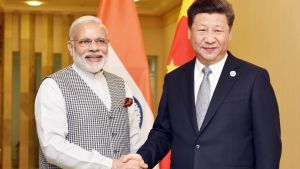The United States and India: Emerging Allies or Necessary Partners?
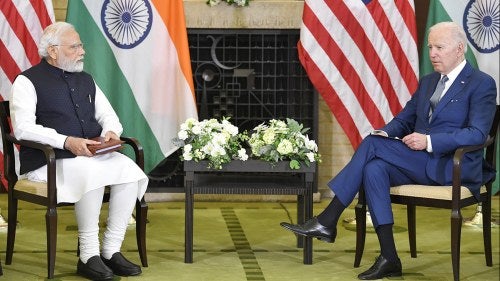
Indians strongly support the bilateral partnership and anticipate increased US security assistance. But Americans are less enthusiastic about growing ties.
Despite warming ties over the last twenty years, US-India relations remain difficult to characterize. Both countries see their bilateral partnership and commitments to the Quadrilateral Security Dialogue (Quad) as counterweights to China’s growing influence, and their increasing convergence in Indo-Pacific strategy was on display at the 2+2 Ministerial Dialogue in April and Quad Leaders’ Summit in May. At the same time, significant strategic differences remain, including disagreements over trade practices, S-400 deployments, and responses to the Russian invasion of Ukraine. Most notably, India has been the only major democracy not to directly condemn the invasion, retaining its commercial and defense procurement partnership with Russia.
US and Indian leaders frequently tout the influence of shared democratic values and people-to-people ties on the bilateral relationship. Polling of the Indian public from the Pew Global Attitudes Project, the Stimson Center, and the Observer Research Foundation points to growing favorability toward US ties and expectations of security reassurance, especially if China gets involved. However, recent Council polling shows that Americans don’t necessarily reciprocate Indians’ enthusiasm, primarily seeing India as a necessary partner rather than an ally with shared values and interests.
Indian Views of the United States Have Improved
Polling of the Indian public over the last 10 years shows improving, consistently favorable views of the United States. The Pew Research Center’s Global Attitudes Survey of all Indian adults, conducted through face-to-face interviews, finds that net favorability of the United States improved from 31 percent in 2011 to 49 percent in 2019, a trend that has persisted through diplomatic challenges and changes of government. Although high-profile exchanges may have generated goodwill—a short-term peak in favorability followed President Obama’s state visit in January 2015—diplomatic rows, like the the 2013 Deyvani Khobragade incident, do not appear to have negatively impacted long-term perceptions. While favorability declined in the first year of the Trump administration amid uncertainty over Trump’s 'America First' policies, they had returned to historic trends by the end of his term.

By 2019, Indians viewed the United States more favorably than any other major power included in the survey. Six in 10 Indians held favorable views of the United States (60%), as opposed to 11 percent with unfavorable views and 30 percent who did not know. Indians were more likely to rate the United States favorably than Russia (49%), the European Union (34%), China (23%), or the United Nations (42%).
Indians Anticipate Security Assistance from the US in Conflicts with Neighbors
Indians’ positive views of the United States could be influenced by the expectation of political and security assistance from Washington. In a spring 2022 phone survey of all Indian adults, commissioned by the Stimson Center and conducted by CVoter, majorities of Indians believe that the United States would help India defend itself in conflicts against China (56%) and Pakistan (59%).
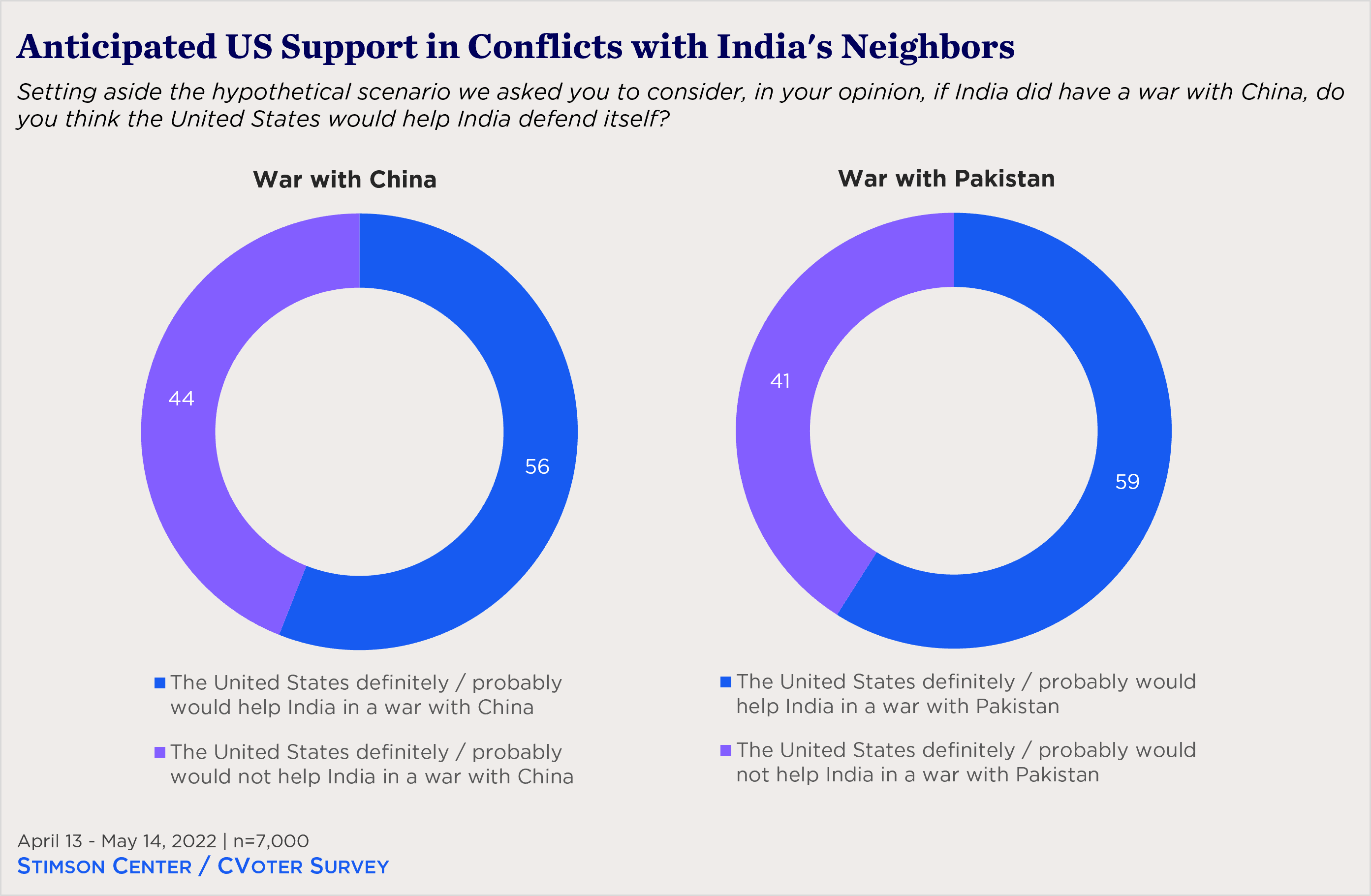
US diplomacy has leaned towards India in recent disputes with its neighbors, including unprecedented tacit support for India’s airstrike in Pakistan’s Balakot region in 2019. Nevertheless, greater assistance would signal a major shift in US-India ties. The United States has historically stayed out of India’s border conflicts, including recent skirmishes with China in the Galwan Valley (2020) and along the Indo-Pakistani border (in 2019 and 2020). For its part, India has resisted foreign intervention in border conflicts.
These expectations of US security assistance may reflect Indians’ broader assumptions about Washington's desire to counter China and strategic alignments in their region. An increasing number of voices in New Delhi’s security establishment envision a larger US role against a “China-Pakistan nexus,” and majorities of Indians believe that China would aid Pakistan in an Indo-Pakistani war (56%) and that Pakistan would aid China in a Sino-Indian war (59%).
The US and India have indeed increased information sharing, joint exercises, and cyberspace collaboration in recent years. But there is no question that public opinion is far ahead of policy when it comes to security cooperation—and that many potential minefields, including frayed but ongoing US military ties with Pakistan, remain ahead.
Young, Urban Indians Support the US in Competition with China, Back Strong Quad Ties
Young urban Indians are particularly supportive of strong relations with the United States and its allies. An Observer Research Foundation survey of Indians ages 18–35 in fourteen major cities found that nearly four in five expect the United States to be a leading partner 10 years from now (78%), followed immediately by Quad counterparts Australia (62%) and Japan (57%).

This demographic also backs the US in its strategic competition with China. Six in 10 believe India that should cooperate with the United States in the event of rising US-China tensions (62%), as opposed to 37 percent who support neutrality and 1 percent who would cooperate with China.
In such a young, rapidly urbanizing country, these results could anticipate a more rapid shift towards the United States and its allies, and away from China, whose rise as a great power is seen as a threat by 70 percent of this generation.
Americans See India as a ‘Necessary Partner’ More Than an Ally
Results from the 2022 Chicago Council Survey show that Americans are less enthusiastic about US-India ties. When asked to rate their feelings towards India on a thermometer scale where 0 represents very cold, unfavorable feelings and 100 represents very warm, favorable feelings, towards India, Americans gave a mean score of 54. These views are generally shared across the partisan spectrum, with Republicans (52) expressing slightly less positive views of India than Democrats (55) and Independents (55).
Though above the midline, India’s rating falls significantly below the scores given to other regional partners like Japan (66), South Korea (61), and Taiwan (60). And while Indian views of the United States have trended positively in recent years, American views have changed little since 2010, in contrast to their views of other Asian partners.

More broadly, Americans are more likely to see India as a necessary partner (42%) rather than an ally (21%), including similar proportions of Republicans (45%), Democrats (42%), and Independents (40%). Nearly one-third of Americans are unsure about the relationship (30%). Compared to India, Americans are more likely to regard other Asian countries like Japan (44%), South Korea (40%), and Taiwan (30%) as allies. However, these countries have closer security relationships with the United States (Japan and South Korea are US treaty allies, while US defense commitments to Taiwan are recognized through the Taiwan Relations Act). Public perceptions may follow growing security ties.
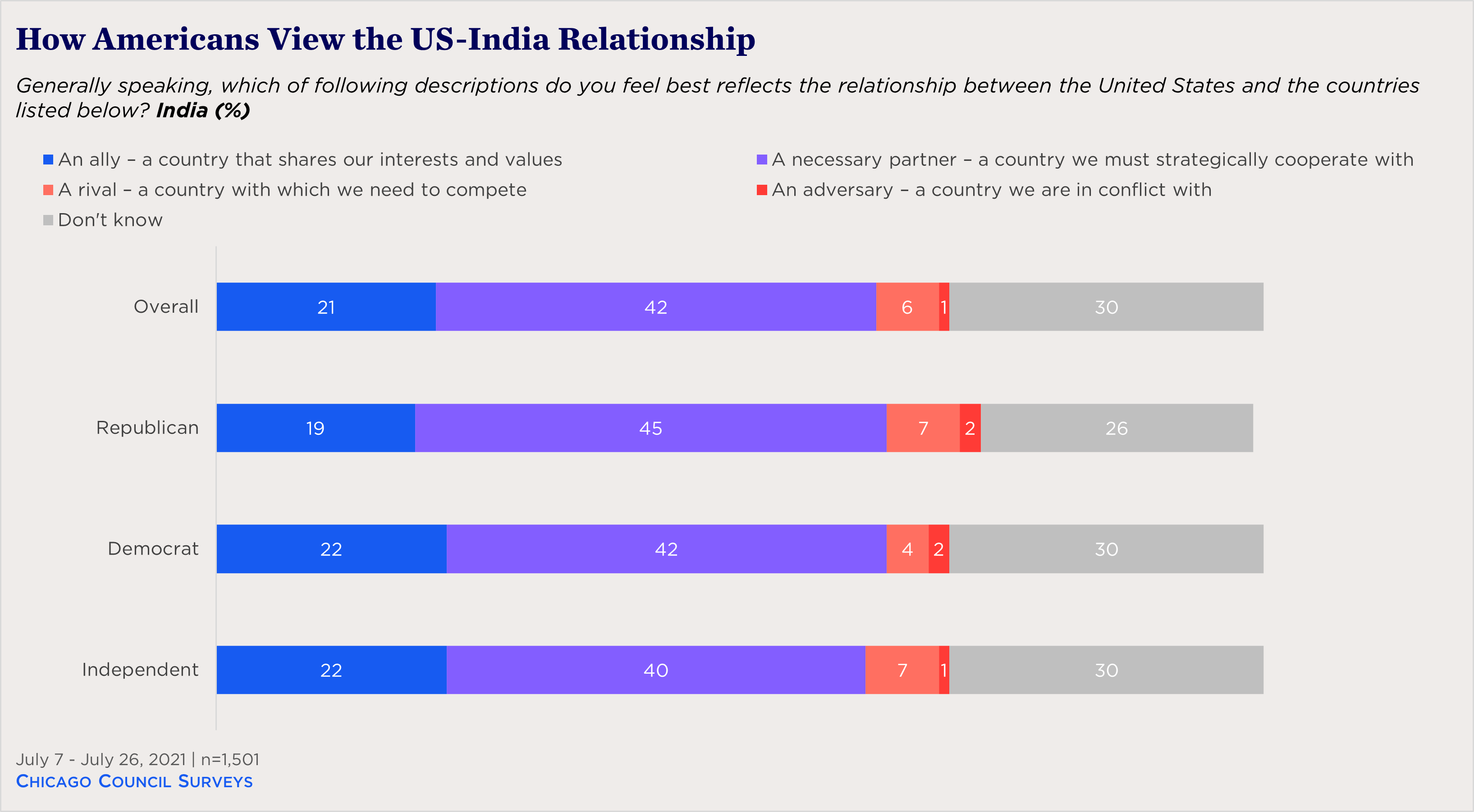
Looking Forward
US and Indian leaders have long conveyed high aspirations for the bilateral relationship, but in practice, New Delhi has often kept Washington at arm’s length. This pattern was evident during Indian External Affairs Minister Jaishankar’s visit to Washington last month, when he sharply criticized US arms sales to Pakistan and demurred on US sanctions on Russia, even while touting expanding ties.
However, public opinion suggests that the Indian public is ready for ties to grow. Young urban Indians’ strong support of the United States and its Indo-Pacific priorities may draw the countries towards closer alignment, particularly as concerns about China-Pakistan collaboration grow.
At the same time, Americans’ less enthusiastic support for India does not match Indians’ expectations of US security assistance in a crisis. Leaders will need to manage public expectations on both sides to shape a “defining partnership of the twenty-first century.”


Related Content
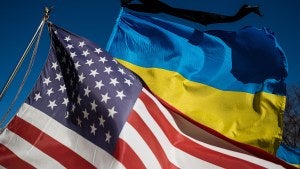 Public Opinion
Public Opinion
On some of the most significant issues of the day, including how the United States should respond to Russia's invasion of Ukraine, Americans across party lines are in agreement, albeit often for different reasons.
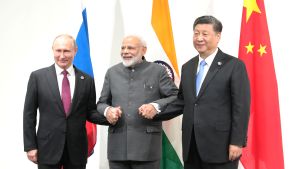 Global Politics
Global Politics
Tanvi Mandan and Srinath Raghavan unpack India’s foreign policy calculations between Russia, China, and a unified West.
 Public Opinion
Public Opinion
While Trump has hailed Prime Minister Narendra Modi as a "true friend" and extolled the world’s largest democracy, are Americans equally as enthusiastic about the US-India relationship?
